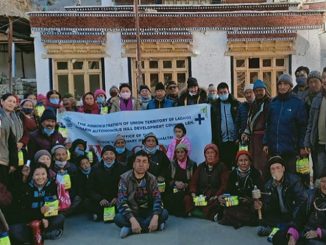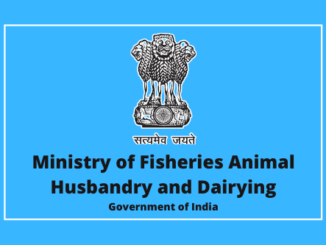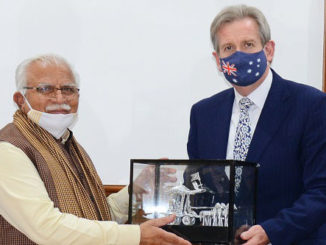India is an agricultural country with about 65 to 70% of the full population having agriculture and husbandry if livestock is of various importance in India’s economy. Livestock plays a vital role within the Indian economy. About 20.5 million people depend upon livestock for his or her livelihood. Livestock contributed 16% to the income of small rural households, while the typical for all rural households was 14%. Livestock provides livelihood to two-thirds of the agricultural community. It also provides employment to about 8.8% of the population in India. India has vast livestock resources. The livestock sector contributes 4.11% of the gross domestic product and 25.6% of the full agricultural GDP. India has the most important buffalo population within the world, with the most important livestock within the world also in India at 535.78 million. the most important number of cows within the country is 192.49 million, buffalo is 109.85 million, goats have a population of 148.88 million. And sheep is 74.26 lakhs. it’s also the second largest aquaculture country within the world’s largest poultry market. And fifth within the population of duck and chicken is 851.81 million, tenth within the world camel population – 2.5 lakh, while within the country, camel is that the highest in Rajasthan and therefore the state’s Rakia is protected by it.
Important of livestock contribution.
- Food: Livestock provides foods like milk, meat and eggs for human consumption. India is that the most wanted milk producer within the world. it’s producing about 176.34 million tonnes of milk in one year (2017-18). Likewise it’s producing about 95.22 billion eggs, 7.70 million tonnes of meat in an exceedingly year. Livestock sector production was valued at Rs 9,17,910 crore at current prices during 2016-17, which is about 31.25% of the worth of production from agriculture and allied sector. the worth of livestock production at constant prices was about 31.11% of the worth of production from total agriculture and allied sector. the full fish production in India was estimated to be 12.61 million metric tons during the fiscal year 2017-18.
- Fibre and Hides(Skins): Livestock also contributes to the assembly of wool, hair, hides and pellets. Leather is that the most significant product with a large export potential and is employed for various purposes reception and abroad. India has been producing around 41.5 million kg of wool since 2017-18.
- Agricultural use: The bull is named the backbone of Indian agriculture. Despite much progress within the use of mechanical power in Indian agricultural operations, Indian farmers, especially in rural areas, still depend upon bullock carts for various agricultural operations like bringing fodder and straw from animals to the farm. Bullock carts are saving plenty on fuel which is a vital input for mechanical power like tractors, combine harvesters etc. Animals like camels, horses, donkeys, mules, etc., are extensively accustomed transport goods to varied parts of the country. apart from the bull. In mountainous areas goods like mules and ponies function the sole options for transportation. Similarly, the military has got to depend upon these animals for transporting various goods in high altitude areas.
- Dung and other animal wastes: Dung and other animal wastes function excellent farm yard manure and are worth several crores of rupees. except for this it’s also used as fuel (bio gas, scrap cake), and poor man’s cement (cow dung) for construction.
- Storage: Considered a ‘moving bank’ due to their ability to maneuver livestock away during emergencies. They function capital and within the cases of landless agricultural labourers again and again it’s the sole capital resource that they need. Livestock works as an asset and just in case of emergency they function a guarantee to require loans from local sources like money lenders in villages.
- Weed control: Livestock also are used as biological control of brushes, plants and weeds.
- Cultural: Provides protection to livestock owners and particularly adds to their self-esteem after they own prized animals like pedigrade bulls, dogs and high yielding cows / buffalo etc.Sports/Entertainment: People also use animals like mare, rams, bullock cock, chicken etc. for competition and sports. Despite the ban on these animal competitions, cock fights, ram fights and bull fights, bull races (jalli kattu) are quite common during the festive season. Importance of Livestock in Farmer’s Economy
Livestock plays a very important role within the economy of farmers. Farmers in India maintain a husbandry system i.e. a mixture of crop and livestock where the assembly of one enterprise becomes the input of another enterprise, thereby realizing resource efficiency. Cattlemen serve farmers in various ways.
Income: Livestock could be a source of supportive income for several families in India, particularly the resource poor who maintain some heads of animals. like cow and buffalo will still provide regular income to cattlemen through the sale of milk and milk-based foods like ghee, curd, buttermilk, cheese, mawa, etc. Animals like sheep and goats give more benefits from time to time at lower expenses like, for the treatment of sick people, milk is incredibly expensive at the time of need, and goat is additionally called poor cow, so it’s the education of youngsters, of homes. Acts as a source of income during emergencies like repair of houses etc. Animals also function as moving banks and property that provide economic protection to owners.
Employment: An outsizes number of individuals in India are less literate and unskilled and rely on agriculture for his or her livelihood. But thanks to being seasonal in nature, maximum 180 days of employment are available in a very year. Landless and low land people rely on livestock to use their labor during lean agricultural seasons. additionally, livestock products like animal milk, meat, and eggs are a very important source of animal protein for the household tax members of livestock. The per capita availability of milk is about 394 grams per day; Eggs are 79 p.a. during 2019-20.
Social Security: Animals provide social insurance to owners per their status in society. Families especially the landless who keep their livestock better than those that don’t. it’s a awfully common custom in various parts of the country to donate animals during marriage. Raising animals could be a part of Indian culture. Animals are utilized in various social religious festivals. And worshiping goat on Eid and sacrificing it’s also a custom and is most ordinarily used for eating chicken. many homeowners are keen on their animals.
Farming: Bulls are the backbone of Indian agriculture. Farmers especially rely on bulls for ploughing, carting and transporting both marginal and little inputs and outputs.
Dung: In rural areas, dung is employed for several purposes including fuel (dung cakes), fertilizer (composting fields, and plastering) material (poor man’s cement
India is mainly agricultural economy . Agricultural activities contribute about 50% of the economy. Agriculture involves growing and selling of crops, poultry, fishing, cattle rearing, and animal husbandry. People in India earn their livelihood by involving themselves in many of these activities. These activities are vital to our economy. The Indian economy has seen major growth in the last few decades. The credit for this boom largely goes to the service sector. Agriculture and associated activities have also been improvised to match the global standards and the export of various food products has seen an upward trend thereby adding to the economic growth. The industrial sector does not lag behind a bit. A number of new large scale, as well as small scale industries, have been set up in recent times and these have also proved to have a positive impact on the Indian economy. Majority of the working Indian population was and is still engaged in the agriculture sector. Growing crops, fishing, poultry and animal husbandry were among the tasks undertaken by them. They manufactured handicraft items that were losing their charm with the introduction of the industrial goods. The demand for these goods began to decline. The agricultural activities also did not pay enough.
The government identified these problems as hindering the economic growth of the country and established policies to curb them. Promotion of cottage industry, providing fair wages to the labourer’s and providing enough means of livelihood to the people were some of the policies laid by the government for the country’s economic growth.
The livestock species play very important economic and socio-cultural roles for the wellbeing of rural households, such as food supply, source of income, asset saving, source of employment, soil fertility, livelihoods, transport, agricultural traction, agricultural diversification and sustainable agricultural production. The aim of this work was to identify and characterize the different roles that livestock and livestock species play in rural communities of Timor-Leste, highlighting the importance of animal production for the wellbeing and rural development, and relate the functions performed by livestock production with economic, social and cultural attributes of the communities. The data used in this study were collected in 2011 through a questionnaire survey in three rural communities in the district of Bobonaro, namely in a mountain area, an irrigation plain and a coastal zone, and were complemented with secondary data. Livestock production in Timor-Leste is predominantly familiar being chickens, pigs, goats, cattle, horses, buffaloes and sheep the main species. Beyond the economic function, each livestock species also performs social and cultural functions. Livestock helps on food supply, family nutrition, family income, asset savings, soil productivity, livelihoods, transport, agricultural traction, agricultural diversification and sustainable agricultural production, family and community employment, ritual purposes and social status
Livestock functions can be classified in several ways. According to FAO, two widely used classifications are based on the kinds of output produced or in the uses in which these outputs are put on. Among the kinds of output produced it should be mentioned the food, inputs to cropping, and raw materials. Among output uses, subsistence consumption by the livestock holder’s household, direct supply of inputs, cash income through sales of live animals or their output, savings and investment and social functions such as paying bride wealth, or providing animals for communal feasts or sacrifices can be pointed out.
Another classification divides livestock functions in economic roles such as source of cash income and mean of savings accumulation, direct feed use for family subsistence, input supply such as fertilizer and animal draught and capacity to comply with a set of social rules and obligations.
Livestock has an important contribution for food supply of rural and urban areas and contributes to the family nutrition, supplying animal protein. As household income increases, the consumption of protein increases, principally from animal origin, allowing the substitution of vegetal by animal protein. Besides milk, eggs and meat used as a source of food, other livestock products are used for domestic consumption and local sale such as skins, hides and horns.
Livestock feature as living savings can be converted into cash whenever the family needs it, is a security asset influencing access to informal credits and loans and being also a source of collateral for loans. In many rural regions, in special where financial markets are absent or non-existent, livestock stocks or herds are a source of asset accumulation and a measure of prosperity. Livestock stocks or assets can be mobilized at any time, satisfying planned expenditures such as children school fees and bride wealth or unplanned expenses such as the illness and death of family members. This livestock asset could be seen as “bank account” and it is also an important source of family savings that can be used in years of low crop production, reducing income insecurity and household vulnerability, being an important source of risk reduction and security increase.
Livestock production is closely interrelated with crop production. The use of livestock and its sub product manure are important in crop production. Livestock is a source of energy providing draught animal power while manure improves soil structure and fertility as well as water retention. Both uses are environmentally friendly improving energy and nutrient cycling. Livestock is also used to transport agricultural inputs and outputs and people.
Livestock production is an important mean of exchange between rural households and, when sold, contributes to boost and strengthen rural markets. Rural markets are an important piece in the operation mode of rural communities and a significant contribution for rural families’ wellbeing and wealth.
The livestock social functions correspond to the symbolic values associated to each species and the use of animals for the fulfillment of a set of rituals and social obligations of families and communities. Livestock gives social status to its owners once it is considered a common mean of demonstrating wealth and provides economic status as it facilitates the access to informal credits and loans to the households. Livestock is also used in traditional rituals, ceremonies and festivities and is given as a gift in worships (e.g. installation of ancestral spirits, ritual slaughter, bride wealth).
In some cultures, animals can be considered sacred (cattle in India) and in others cultures (pigs in Muslim countries) animals are impure. For both these cultures, those species are not consumed by the population. In other countries or cultures, animals play an important leisure role, being used for betting, like horse racing and cock fighting, for sports, like horses in polo and bullfighting and for hunting, like dogs, falcons and horses.
Animal health greatly affects livestock functions, not only by direct effects on animal productivity but also by indirect effects, namely concerning human health, coasts associated to disease control, international movement restrictions of animals and animal products as well as animal welfare.
Concerning the direct effect on productivity, it can be due not only to the mortality and reduction of livestock herds, but also, due to the decrease on productive parameters, namely weight gain or milk production, or even through the decrease of quality of animal products. The existence of a great number of parasite, infectious or metabolic diseases that affect fertility cannot be underestimated, despite the difficulty to quantify the associated costs.
Besides the positive effects of livestock to human welfare, livestock production and consumption can also be associated to some risks, namely the transmission of important diseases that are transmitted from animals to humans (zoonosis). The absence of rigorous animal health control programs represents a high risk to the human health. Moreover the rigorous control and restrictions to animal movement and to exportation of animal products, associated with the existence of animal disease, makes the existence of national animal health programs indispensable in order to allow international trade.
The social and cultural functions of livestock are often ignored when estimating the total contribution of livestock to the development and well-being of rural communities. Since those functions are difficult to value in monetary terms, emphasis is mainly placed on the physical marketed livestock production. One key to smallholder competitiveness is its ability to capture non market benefits, however not well measured to date. Livestock helps on food supply, family nutrition, family income, asset savings, soil productivity, livelihoods, transport, agricultural traction, agricultural diversification and sustainable agricultural production, family and community employment, ritual purposes and social status Livestock functions can be classified in several ways. According to FAO, two widely used classifications are based on the kinds of output produced or in the uses in which these outputs are put on. Among the kinds of output produced it should be mentioned the food, inputs to cropping, and raw materials. Among output uses, subsistence consumption by the livestock holder’s household, direct supply of inputs, cash income through sales of live animals or their output, savings and investment and social functions such as paying bride wealth, or providing animals for communal feasts or sacrifices can be pointed out. Another classification divides livestock functions in economic roles such as source of cash income and mean of savings accumulation, direct feed use for family subsistence, input supply such as fertilizer and animal draught and capacity to comply with a set of social rules and obligations Livestock has an important contribution for food supply of rural and urban areas and contributes to the family nutrition, supplying animal protein. As household income increases, the consumption of protein increases, principally from animal origin, allowing the substitution of vegetal by animal protein. Besides milk, eggs and meat used as a source of food, other livestock products are used for domestic consumption and local sale such as skins, hides and horns. Livestock feature as living savings can be converted into cash whenever the family needs it, is a security asset influencing access to informal credits and loans and being also a source of collateral for loans. In many rural regions, in special where financial markets are absent or non-existent, livestock stocks or herds are a source of asset accumulation and a measure of prosperity. Livestock stocks or assets can be mobilized at any time, satisfying planned expenditures such as children school fees and bride wealth or unplanned expenses such as the illness and death of family members. This livestock asset could be seen as “bank account” and it is also an important source of family savings that can be used in years of low crop production, reducing income insecurity and household vulnerability, being an important source of risk reduction and security increase. Livestock production is closely interrelated with crop production. The use of livestock and its sub product manure are important in crop production. Livestock is a source of energy providing draught animal power while manure improves soil structure and fertility as well as water retention. Both uses are environmentally friendly improving energy and nutrient cycling. Livestock is also used to transport agricultural inputs and outputs and people. Livestock production is an important mean of exchange between rural households and, when sold, contributes to boost and strengthen rural markets. Rural markets are an important piece in the operation mode of rural communities and a significant contribution for rural families’ wellbeing and wealth.The livestock social functions correspond to the symbolic values associated to each species and the use of animals for the fulfillment of a set of rituals and social obligations of families and communities. Livestock gives social status to its owners once it is considered a common mean of demonstrating wealth and provides economic status as it facilitates the access to informal credits and loans to the households. Livestock is also used in traditional rituals, ceremonies and festivities and is given as a gift in worships (e.g. installation of ancestral spirits, ritual slaughter, bride wealth).In some cultures, animals can be considered sacred (cattle in India) and in others cultures (pigs in Muslim countries) animals are impure. For both these cultures, those species are not consumed by the population. In other countries or cultures, animals play an important leisure role, being used for betting, like horse racing and cock fighting, for sports, like horses in polo and bullfighting and for hunting, like dogs, falcons and horses.Animal health greatly affects livestock functions, not only by direct effects on animal productivity but also by indirect effects, namely concerning human health, coasts associated to disease control, international movement restrictions of animals and animal products as well as animal welfare. Concerning the direct effect on productivity, it can be due not only to the mortality and reduction of livestock herds, but also, due to the decrease on productive parameters, namely weight gain or milk production, or even through the decrease of quality of 87animal products. The existence of a great number of parasite, infectious or metabolic diseases that affect fertility cannot be underestimated, despite the difficulty to quantify the associated costs. Besides the positive effects of livestock to human welfare, livestock production and consumption can also be associated to some risks, namely the transmission of important diseases that are transmitted from animals to humans (zoonosis). The absence of rigorous animal health control programs represents a high risk to the human health. Moreover the rigorous control and restrictions to animal movement and to exportation of animal products, associated with the existence of animal disease, makes the existence of national animal health programs indispensable in order to allow international trade.The social and cultural functions of livestock are often ignored when estimating the total contribution of livestock to the development and well-being of rural communities. Since those functions are difficult to value in monetary terms, emphasis is mainly placed on the physical marketed livestock production. One key to smallholder competitiveness is its ability to capture non market benefits, however not well measured to date.It is relevant to know the present functions of the livestock sector, and to understand that expanding the output of one function may diminish the output of another. So, in order to evaluate its importance, from different points of views, and to ensure correct policies and practices, all of them have to be taken in consideration.
The Indian economy undergoes several positive changes since independence. It is growing at a good pace. However, the rural regions of our country are still under-developed. The government must make efforts to improve the economic condition of these areas






Be the first to comment